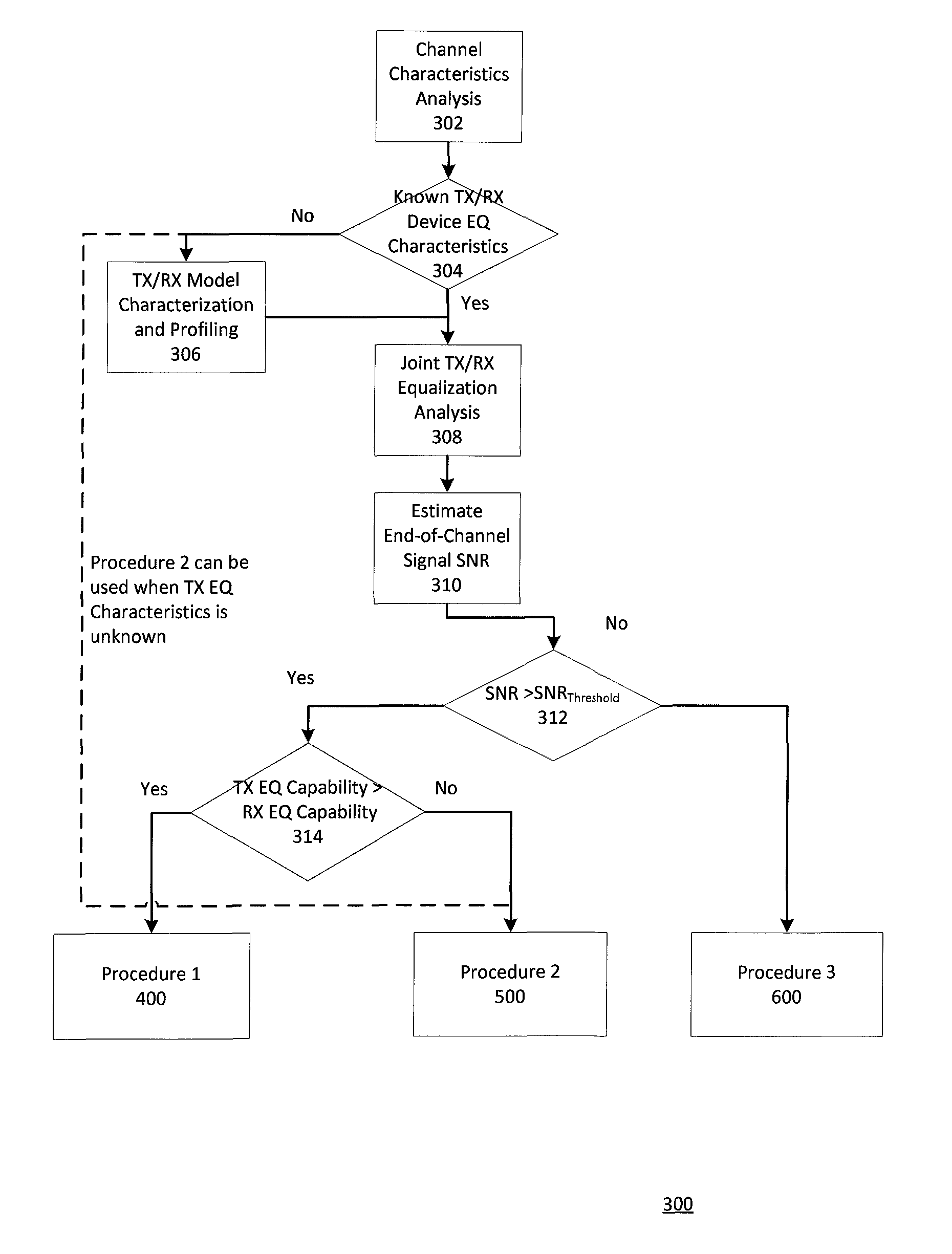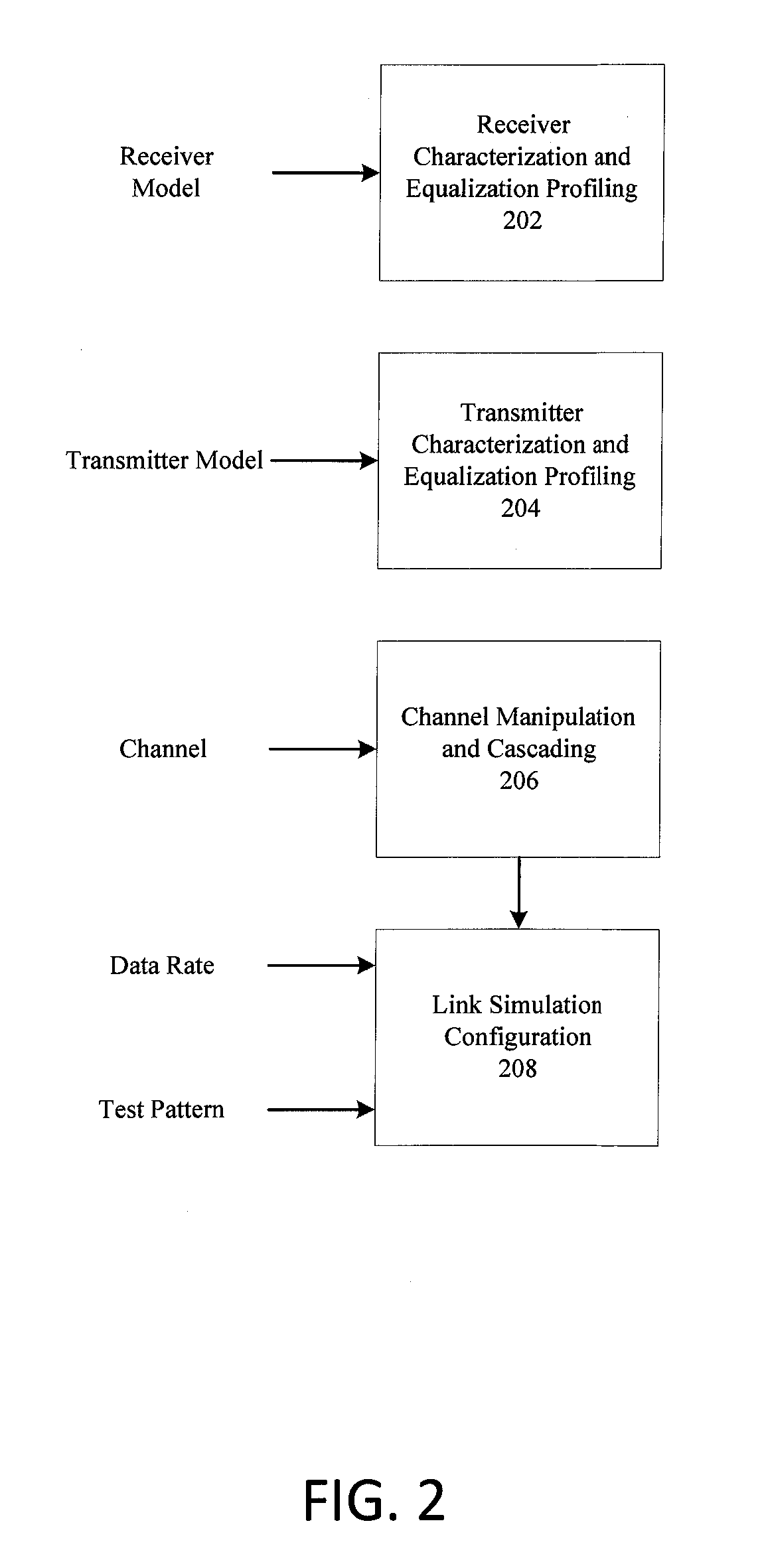Methods for joint optimization of link equalization
a technology of equalization and optimization methods, applied in the field of transmission of data across communication links, can solve the problems of becoming increasingly difficult to achieve the goal of achieving the desired bit error rate (ber) target, and achieve the effect of equalization sufficient to achieve the targ
- Summary
- Abstract
- Description
- Claims
- Application Information
AI Technical Summary
Benefits of technology
Problems solved by technology
Method used
Image
Examples
Embodiment Construction
[0017]Finding optimal transmitter and receiver equalization settings in a joint manner is highly challenging due to complex channel characteristics and a very large search space for the transmitter and receiver equalization settings. For example, a transmitter may have tens of thousands of equalization settings, and a receiver may have tens of millions of equalization settings. Hence, in this example, the combined search space may have several hundreds of billions of possible equalization settings.
[0018]Searching such a large parameter space is prohibitive in terms of computational time and resources. As such, conventional approaches typically optimize the transmitter and receiver equalization settings separately without taking into account each other, rather than interactively and jointly. This often results in sub-optimal settings.
[0019]The present disclosure provides three optimization processes that cover a wide variety of applicable link and device configurations. In addition, ...
PUM
 Login to View More
Login to View More Abstract
Description
Claims
Application Information
 Login to View More
Login to View More - R&D
- Intellectual Property
- Life Sciences
- Materials
- Tech Scout
- Unparalleled Data Quality
- Higher Quality Content
- 60% Fewer Hallucinations
Browse by: Latest US Patents, China's latest patents, Technical Efficacy Thesaurus, Application Domain, Technology Topic, Popular Technical Reports.
© 2025 PatSnap. All rights reserved.Legal|Privacy policy|Modern Slavery Act Transparency Statement|Sitemap|About US| Contact US: help@patsnap.com



